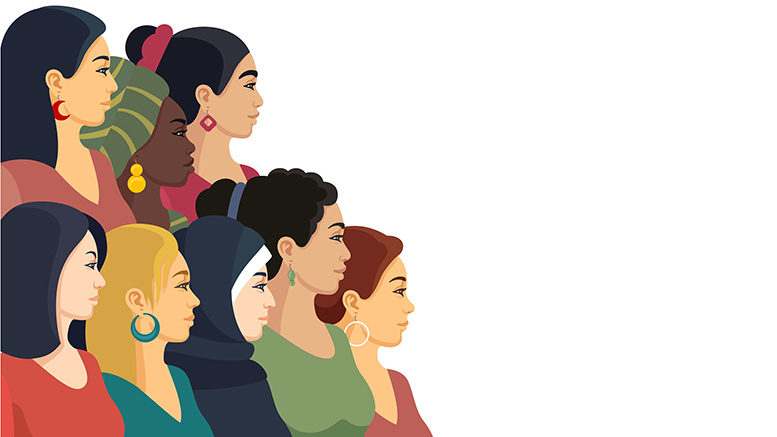In 1971, a joint resolution of Congress designated August 26 of each year as Women’s Equality Day. In the style of such resolutions, after a long list of “WHEREAS” punctuated by a “NOW, THEREFORE, BE IT RESOLVED,” the story to be told was one of Women’s persistent INequality.
Now, more than 50 years later, what story does the data tell?

At the Kern Community College District where I am chancellor, two of the six chancellors have been women. Statewide, the California Community College system has never had a woman serve as an official chancellor — although twice women have been named interim chancellors.
According to the Community College League of California’s CEO Tenure & Retention Dashboard, of the 138 CEOs in the California Community College system, 51 are female (37%). Since 1913, more than 75% have been male, although that gap has narrowed over the past 30 years.
Let’s look at higher education across the United States.
According to the “2017 Pipelines, Pathways, and Institutional Leadership” update from the American Council on Education, women have earned:
- more than 50% of all associate degrees since 1978
- more than 50% of all bachelor’s degrees since 1982
- more than 50% of all master’s degrees since 1987
- more than 50% of all doctoral degrees since 2006
But as of 2015, women disproportionately held only 32% of the full professor positions at degree-granting postsecondary institutions. As of 2016, women held only 30% of presidencies across all institutions of higher education.
A closer look at STEM
As a former math faculty, I was curious about the gender distribution in STEM (the combined fields of science, technology, engineering and math) disciplines.
The good news: At the collegiate level, we are seeing some increases in women in STEM fields. Mark Kantrowitz’s April 2022 article in Forbes looked at gains women made in STEM fields. According to federal IPEDS data, women’s representation increased from 34% in 1994 to 40% in 2010 and to 45% in 2020.
We see the closure of gender gaps in some STEM fields, but not in others. In 2017, women represented 53% of bachelor’s degree recipients in science and math, 65% in psychology and social science, and 80% of baccalaureates in health and medicine.
The not-so-good news: Among bachelor’s degree recipients, women comprise only 16% of those in computer and information sciences, 21% in engineering and engineering technology, 27% in economics and 38% in physical sciences.
And even as we are seeing increases in women completing degrees in STEM fields, we are not seeing that reflected in the STEM workforce — particularly in high-paying STEM jobs or positions of leadership.
According to a 2021 report from Pew Research, the median earnings of women in STEM jobs is 74% of their male counterparts. This is a wider gap compared to the broader labor market. So even when we have women entering the STEM workforce, they are not equally represented in the types of high-paying jobs we see more frequently awarded to men. Women represent only 15% of the workforce in engineering jobs, and 25% of the workforce in computer-related jobs — two of the highest-paying fields.
The disparities we see with women in STEM can also be seen in the field of higher education leadership. In her 2019 article “Why Aren’t There More Female University Leaders,” Shirley McGuire notes that female chief academic officers were less likely to seek out the role of president — but were more likely to take part in leadership training, mentoring programs and increased responsibilities that would prepare them for that position.
This article also discusses the so-called “glass cliff” effect, in which women are more frequently brought in to manage an institution during times of crisis, which leads to higher chances of perceived failure. These combined factors discourage many women from considering opportunities at the highest level of leadership.
Women in the workplace
Let’s talk about Equal Pay Day … the day that represents how far into the next year women would have to work in order to earn the same amount men earned the year before. This year, Equal Pay Day occurred on March 15. The AAUW website further disaggregates the data:
- Moms’ Equal Pay Day is September 8. Moms are paid 58 cents for every dollar paid to dads.
- Black Women’s Equal Pay Day is September 21. Black women are paid 58 cents for every dollar paid to white men.
- Latina’s Equal Pay Day is December 8. Latinas are paid 49 cents for every dollar paid to white men.
Equal pay is not a zero-sum game; we can only hope that this truth can be self-evident, and that to advocate for women is not to disaffect white men. No one loses when we move toward equity – everyone wins. We must allow the data to inform our understanding and our opinion as all of us, as a collective, become truth speakers. This is a story that needs telling.
The past few years with the Covid pandemic has only brought the story into sharper focus.
The AAUW’s “Simple Truth Fall 2021” report gives us a glimpse of how Covid has impacted women in the workplace. The brunt of caregiving often falls to women, and as of April 2021, 1.5 million mothers had still not returned to the workforce.
In June 2021, 148,000 women and 232,000 men ages 20 and over returned to the labor force, meaning they were now working or looking for work. Of those, the overwhelming majority of women (97%) were looking for work. Meanwhile, only 12% of men who re-entered the labor force were looking for work, while 88% were working. While there has been significant economic recovery from the depths of the pandemic, the recovery for women has been much slower.
On a global scale
I grew up in the southern part of India. The fourth and last child to Paul and Pam.
As a young child, growing up in south India, I saw examples and heard stories about women leaders. Indira Gandhi was the prime minister of India. And 230 miles across the Laccadives Sea, Prime Minister Sirimavo Bandaranaike, was Prime Minister of Sri Lanka.
As an adult, here in the U.S., I began to see the gender politics that I did not see growing up. Although having these women as high visibility leaders helped shape my worldview, the truth is that they were the exception as women leaders. Since the 1960s, worldwide, only a very small minority of top political positions have been held by women. The United States remains among those countries that have yet to elect a female president, although we reached a significant milestone in 2020 when Kamala Harris was elected as our first female vice president.
But high-profile milestones and high-visibility leadership, although necessary, are not enough. In my short time in this world, I have learned that we must remain vigilant and work together to ensure that gains we may make are not later erased. Nothing is for free; nothing is for certain. We must always be aware that hard-fought successes if taken for granted can easily be lost.
Remember, recognize, recommit
When I get impatient and outraged at these inequities and feel myself shifting from the calm Jean Elaine Grey to her fiery mutant Phoenix in the X-Men comics and movies, I quietly re-read Emily Dickinson’s poem where she reminds us that “The Truth must dazzle gradually, or every man be blind.”
So, let’s continue to be vigilant. Let’s continue to remember this truth. Let’s continue to recognize the great work that has been done. And now, let us each in our own way also recommit to being storytellers and truth speakers to make our own imprint in shaping the American women’s story.





